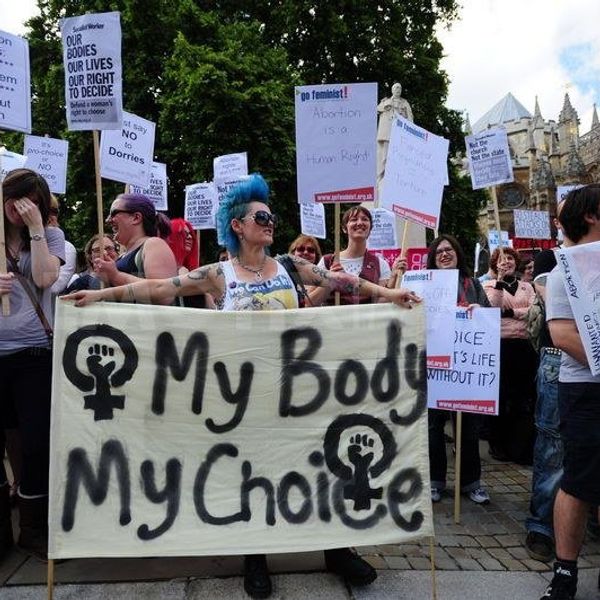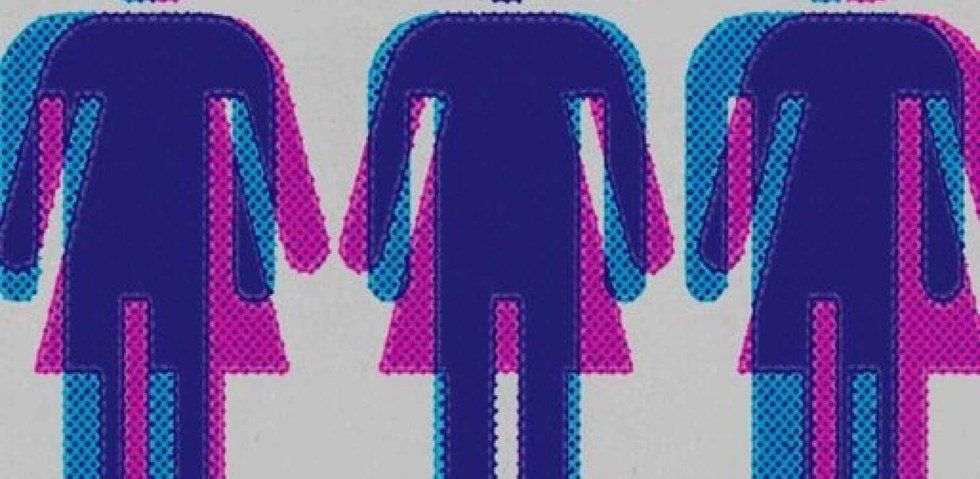As you may have noticed from my picture, I am wearing a dress. I am a woman after all, a transgender woman. You might recognize that word — transgender. It been used more and more commonly nowadays. I'm sure by now we've all heard of Caitlyn Jenner, who announced her identity as a trans woman in April of this year, followed by a flurry of media coverage. Well, I came out well before Ms. Jenner. Where's my CNN interview?
But I should be grateful, because now I get the chance to write about an injustice I've seen in our own schools. It's an injustice so ingrained, so pervasive, that it affects nearly every single student that grows up in the school environment. It is the gender binary, the unspoken code that dictates so much of our lives. It is time we took a look at what it is, what damage it can do and, finally, what we can do to help.
Like many others, I have experienced the gender binary firsthand for most of my life. It was just a few years ago that I escaped one of the most traumatic institutions ever created by humankind — middle school! In middle school I felt like I was a girl, but I had been told I was a boy all my life, so I played the part of a boy ... or at least I made an attempt.
You see, there are certain rules to being a boy, a code you have to follow, and in middle school this code was strictly upheld. You have to like sports, or at least pretend to, and you must make it very clear that you are attracted to girls, but only in a sexual way — too much platonic friendship with girls and you'll be breaking the code. Certain things like cooking, fashion, certain colors and — heaven forbid — crying are strictly forbidden by the code. The list goes on, but the code is well known by anyone who has been in school before so I'll leave it at that.
Now that I have come out and am living more honestly as a girl, I am so much happier. However, I have learned that there is a code for how girls should be, that is upheld even more rigidly than the boy code in schools. In the girl code one's physical appearance is key, and girls typically are held to high and specific standards on how to dress and appear in public. A girl's sexuality is demonized, and in many subjects girls seem to be considered minor players. According to the U.S. Commission on Civil Rights, women make up only about 27 percent of historical figures studied in the average history class.
Of course, rules for gender haven't always been like this. They used to be significantly worse. In America alone, women have had to fight for myriad different rights. In 1848, women meeting in Seneca Falls, New York, dedicated themselves to showing that women deserved the right to vote. In 1903, the Women's Trade Union League fought to show that women were capable of working, paying jobs. And in 2009 the Fair Pay Restoration act helped establish that women are deserving of the same pay as a man.
We can see that expectation for what “women” and “men” should be changes all the time. Humanity constantly tears down the gender norms of the previous generation only to establish gender codes of their own. The cycle can seem inescapable, especially to the young people in schools where self-expression is so heavily policed.
This gender binary is damaging to boys and girls, but they aren't the only ones affected. Indeed, the injustice of the gender binary falls heaviest on the individuals who do not conform to its rules. Transgender and non-binary individuals like myself, people who identify with a gender they aren't supposed to, or who do not identify with any specific gender at all, suffer greatly in a gender binary environment.
White trans women like myself alone face a 1 in 12 chance of being murdered in this country. Trans women of color have a 1 and 8 chance. And as appalling as that is, it is even worse to consider that so much of this violence occurs in schools.
Larry King was in seventh grade at Green Middle School in 2008. The tragedy is that he would never make it to the eighth grade. Because Larry expressed himself through makeup, dresses and other taboos of his assigned gender code, he paid the ultimate price. A fellow student shot Larry twice in the head. Larry was kept on life support until he died a day later. He was 15 years old.
This gender binary takes away students' rights to self-expression and identity, and even our right to life. These are rights guaranteed by the Universal Declaration of Human Rights issued by the United Nations, the U.S. Constitution and many other founding documents that identify them as some of the most fundamental human rights.
There is a lucid message here: The enforced gender binary is a grave injustice. And injustice is best compared to a creeping cancer. It can go unnoticed, living under society's skin until it claims its victims. And like cancer that comes from the very cells that make up our body, injustice comes from the very people who make up our community. It is our responsibility to fight the injustice we create.
But there is always hope. Because the opportunity for justice is always our choice. We can tear down these gender codes and not judge our fellow humans by what they wear, how they act or what they enjoy. The great Martin Luther King Jr. implored us to judge by the content of one's character, and that is what we must do.
This is just the first step, but it is the quintessential step. For when we can know injustice, we can fight injustice. That is why speaking out is so important! The actions we take to speak out are the primary tools of justice and peace. When we can collectively speak out and listen, we can not only fight injustice, we can defeat it!
-A speech written by myself in December of 2015, presented at a competition with The Florida Free Speech Forum. It won first place.





















